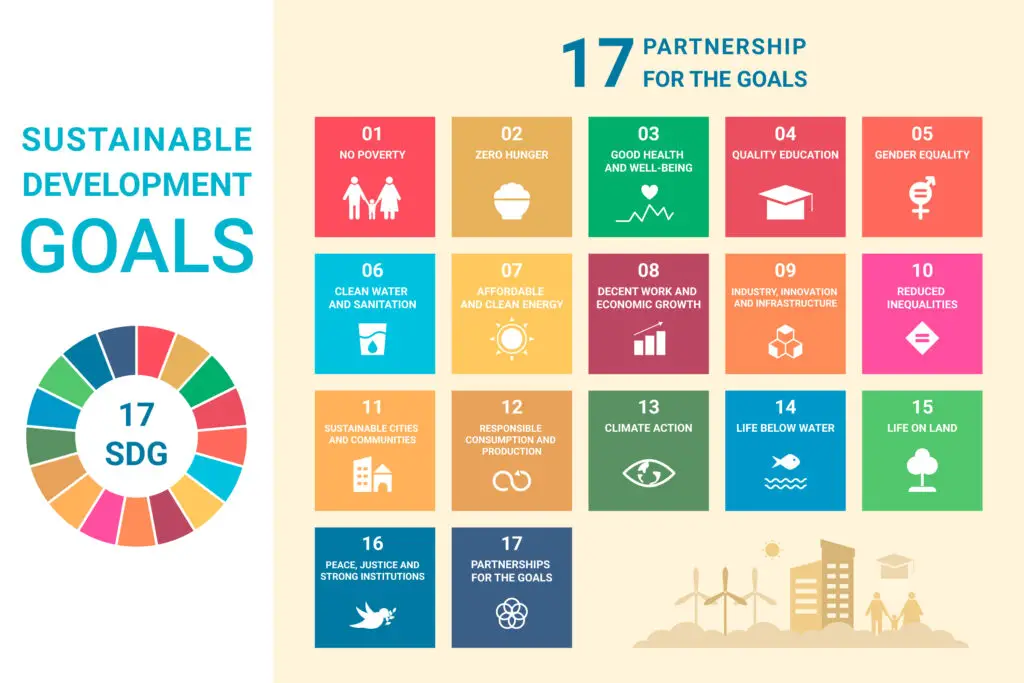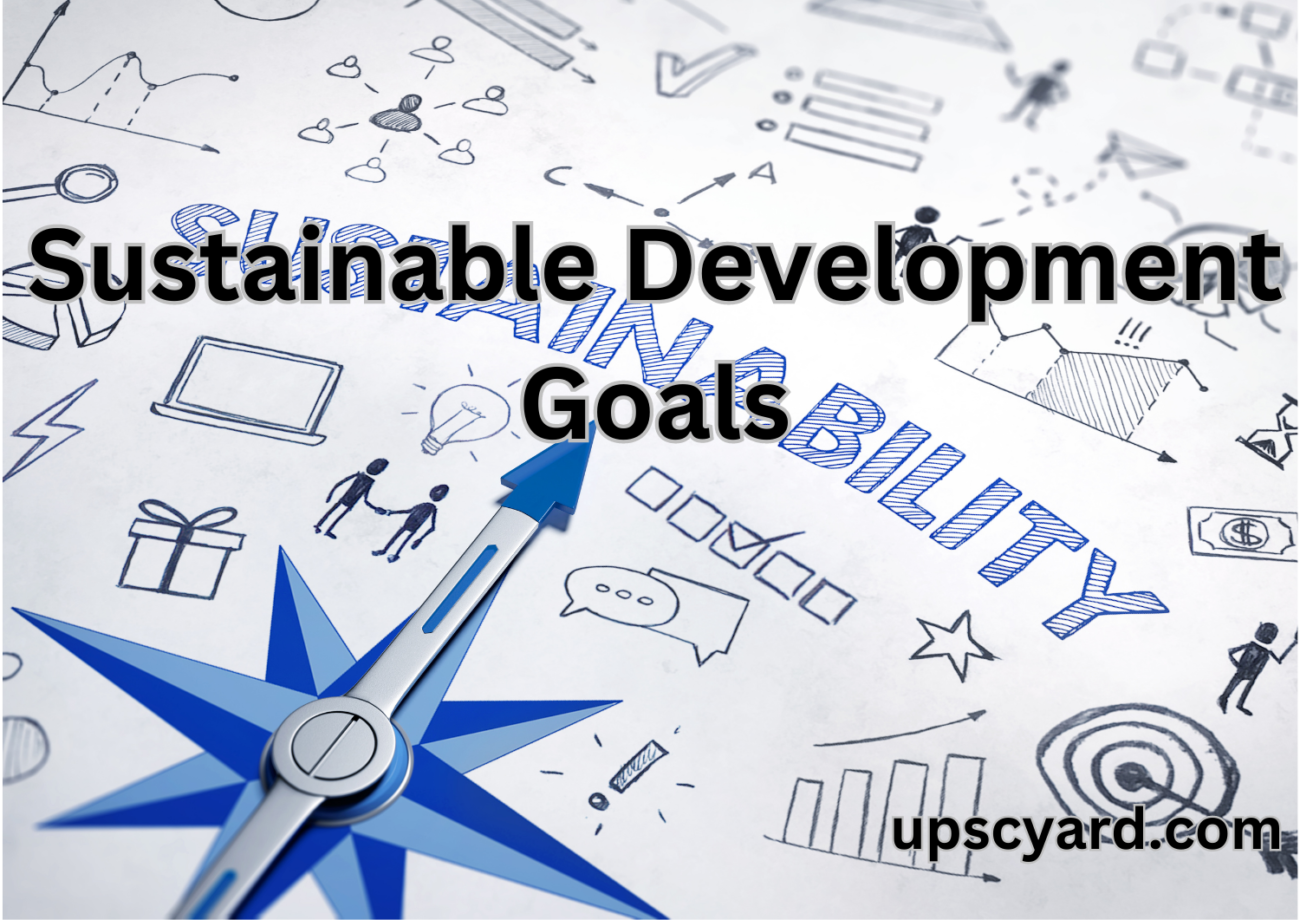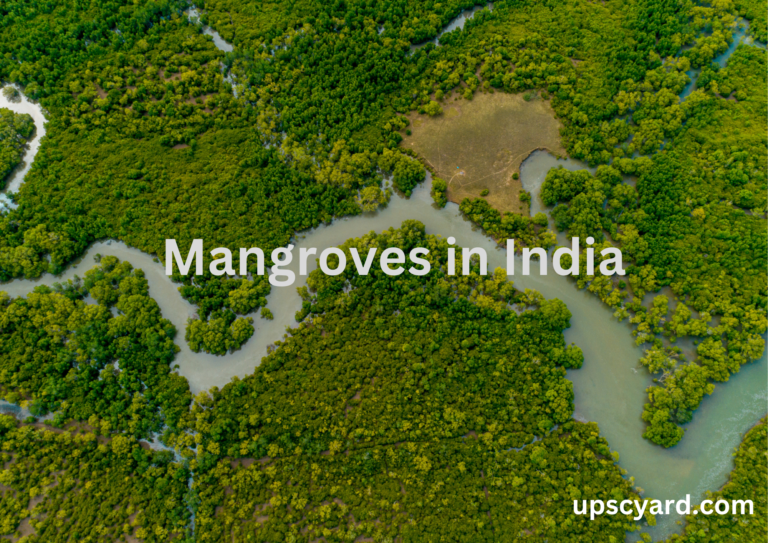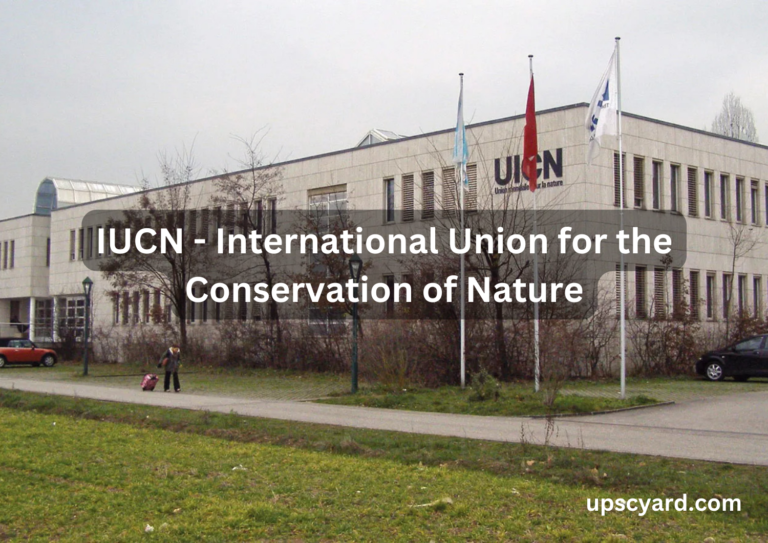Sustainable development is a concept that aims to ensure progress that satisfies the current generation’s requirements while safeguarding the capacity of future generations to fulfill their own needs. This extensively embraced interpretation of sustainable development was articulated by the Brundtland Commission within its publication “Our Common Future” (1987).
Formation of the Brundtland Commission
Back in 1983, the United Nations established a significant entity called the World Commission on Environment and Development, which would later be recognized as the Brundtland Commission. This commission contributed a significant definition to sustainable development, portraying it as the practice of fulfilling current needs while preserving the potential of upcoming generations to fulfill their own requirements.
17 Sustainable Development Goals
Sustainable Development Goals (SDGs) are a set of global objectives aimed at fostering a better world. They encompass various areas of progress that humanity aspires to achieve. Here’s a glimpse into these goals:
- No Poverty (SDG 1): Eliminating extreme poverty from every corner of the world.
- Zero Hunger (SDG 2): Eradicating hunger, ensuring food security, and encouraging sustainable agriculture.
- Good Health and Well-being (SDG 3): Ensuring the health and well-being of all individuals across their lifespan.
- Quality Education (SDG 4): Providing inclusive, equitable quality education and lifelong learning opportunities.
- Gender Equality (SDG 5): Empowering women and girls, and achieving gender equality.
- Clean Water and Sanitation (SDG 6): Ensuring everyone’s access to sustainable water and sanitation management.
- Affordable and Clean Energy (SDG 7): Providing affordable, reliable, sustainable, and modern energy for all.
- Decent Work and Economic Growth (SDG 8): Promoting sustainable economic growth, full employment, and decent work.
- Industry, Innovation and Infrastructure (SDG 9): Building resilient infrastructure, fostering inclusive industrialization, and encouraging innovation.
- Reduced Inequality (SDG 10): Diminishing inequalities within and between countries.
- Sustainable Cities and Communities (SDG 11): Creating inclusive, safe, resilient, and sustainable cities and settlements.
- Responsible Consumption and Production (SDG 12): Ensuring sustainable patterns of consumption and production.
- Climate Action (SDG 13): Taking urgent steps to combat climate change and its effects.
- Life Below Water (SDG 14): Conserving and sustainably using oceans, seas, and marine resources.
- Life on Land (SDG 15): Protecting and restoring terrestrial ecosystems, forests, combating desertification, and halting biodiversity loss.
- Peace, Justice and Strong Institutions (SDG 16): Promoting peaceful, inclusive societies and building effective, accountable institutions.
- Partnerships for the Goals (SDG 17): Strengthening implementation means and revitalizing global partnerships for sustainable development.
These goals embody humanity’s collective effort to create a more sustainable and equitable world for present and future generations.

Sustainable Development in context of INDIA
The Mahatma Gandhi National Rural Employment Guarantee Act (MNREGA) is a notable initiative designed to create employment opportunities for unskilled laborers and uplift their living conditions.
Enforcing the National Food Security Act is a significant step to ensure affordable access to essential food grains for the population.
India’s ambitious Swachh Bharat Abhiyan aims to transform the nation into an open defecation-free country, promoting improved sanitation and hygiene practices.
To harness sustainable energy sources and reduce reliance on fossil fuels, India has set an impressive target of generating 175 GW of renewable energy, including solar and wind power, by 2022. (Learn more about the International Solar Alliance in the linked article.)
Focusing on urban transformation and heritage city development, the Atal Mission for Rejuvenation and Urban Transformation (AMRUT) and Heritage City Development and Augmentation Yojana (HRIDAY) initiatives have been launched to enhance urban infrastructure.
India has taken a significant stride in combating climate change by ratifying the Paris Agreement, showcasing its commitment to global environmental efforts.

Monitoring Methodologies
There are various approaches in place to track the advancement of SDGs, ensuring sustainable development progress is on track.
The Sustainable Development Index (SDI) of 2019, published by the Sustainable Development Solutions Network (SDSN), serves as a valuable tool. This index aids countries in identifying areas that require attention to accomplish SDGs by 2030 and highlights key priorities for early intervention. In the assessment, India secured the 115th position among 162 countries.
The Global Sustainable Development Report (GSDR) of 2019 marks the inaugural report prepared by the United Nations, titled “The Future is Now: Science for Achieving Sustainable Development.” This report evaluates the headway made in relation to the 2030 Sustainable Development Agenda. It raises concern about the current sustainability of our development model, pointing to the risk of regressing due to exacerbated social inequalities and potential irreversible harm to the natural environment that sustains us.
Furthermore, the report highlights a noteworthy trend: the share of modern renewable energy within the global energy supply has risen by an average of approximately 5% each year during the past decade. Interestingly, over the last five years, there has been a consecutive reduction in the cost of renewable electricity (specifically solar and wind energy) since 2009.
Global Challenges in Achieving Sustainable Development
Disparities in National Economic Growth (Global North-South Divide)
Persistent Biodiversity Loss: Despite substantial efforts over the last two decades, the world’s biodiversity decline continues.
Addressing Climate Change: A universal solution is needed to tackle the worldwide issue of climate change. Developing nations, in particular, face distinct challenges within this context.
Addressing climate change and fostering sustainable development are interdependent objectives.
Ensuring Equitable Access to Innovation: Intellectual Property Rights (IPRs) must facilitate access to innovative solutions for both affluent and less privileged populations, contributing to sustainable development.
International Efforts for Sustainable Development
The Stockholm Conference, 1972: This marked a crucial step in highlighting environmental concerns globally.
It led to the Stockholm Declaration, outlining principles and an Action Plan with environmental policy recommendations.
Establishment of UNEP in 1972 to catalyze environmental focus in other organizations’ programs.
- The Earth Summit, 1992: A direct outcome of the Brundtland Commission’s Report, held in Rio de Janeiro. Resulting documents included:
- The Framework Convention on Climate Change (UNFCCC)
- The Convention on Biological Diversity
- The Statement on Forest Principles
- The Rio Declaration
- Agenda 21
- Kyoto Protocol, 1997
- Rio +10, 2002: A 10-year assessment of the Rio outcomes led to the World Summit on Sustainable Development (WSSD) in Johannesburg.
- Ramsar Convention, 1971
- World Heritage Convention, 1972: Identifies and preserves cultural and natural heritage sites of universal importance.
- Convention on International Trade in Endangered Species of Wild Fauna and Flora (CITES), 1973
- Convention on the Conservation of Migratory Species of Wild Animals (CMS), 1979
- Vienna Convention for the Protection of the Ozone Layer, 1985
- Montreal Protocol on Substances that Deplete the Ozone Layer, 1987
- Basel Convention, 1989
- Convention on Biological Diversity, 1992
- United Nations Convention to Combat Desertification, 1994
- Rotterdam Convention, 1998
- Stockholm Convention on Persistent Organic Pollutants, 2001
- Global Tiger Forum, 1993
- International Whaling Commission, 1946
- Minamata Convention, 2013
Strategies for Climate Change Mitigation
- Carbon Sequestration
- Carbon Sink Establishment
- Carbon Credit Mechanism
- Carbon Trading Initiatives
- Carbon Offsetting Practices
- Carbon Tax Approaches
- Geo-engineering Solutions
International Organizations and Agreements
- United Nations Environment Programme (UNEP)
- UN Commission on Sustainable Development (CSD)
- United Nations Convention on the Law of the Sea (UNCLOS)
- Climate Finance Architecture: Green Climate Fund (GCF), Adaptation Fund (AF), and Global Environment Facility (GEF)
- Reducing Emissions from Deforestation and Forest Degradation (REDD) and REDD+
- Paris Agreement of 2015
- Clean Development Mechanism: Reducing greenhouse gas emissions through efficient technologies.
- Global Alliance for Climate-Smart Agriculture (GACSA)
- Partnership for Action on Green Economy (PAGE)
Sustainable Development Goals (SDGs): A comprehensive global agenda aimed at achieving sustainable development across various dimensions.
UPSC Previous Year Question
Define the concept of carrying capacity of an ecosystem as relevant to an environment. Explain how understanding this concept is vital while planning for sustainable development of a region. (2019)
The concept of an ecosystem’s carrying capacity involves the maximum sustainable levels of ecological or ecosystem services that the environment can provide. Once this capacity is surpassed, the ecosystem faces severe constraints or degradation. Here are some real-world instances:
Major Indian cities have surpassed their ecological carrying capacity, straining their resources.
Agroecosystems in Punjab and Haryana are under significant pressure due to excessive groundwater depletion and rising alkalinity.
The Western Ghats have witnessed deforestation and plantation agriculture that have exceeded the ecosystem’s natural limits.
Excessive population stress in the Indo-Gangetic plains contributes to poverty in the region.
In the Himalayas, hydroelectric projects and tourism have heightened the risk of disasters, as seen in the recent sinking of Joshimath due to geological pressures.
Comprehending the notion of carrying capacity is crucial for urban planning, sustainable resource management, development, population regulation, wildlife preservation, and other related fields.




